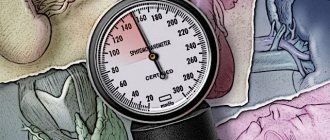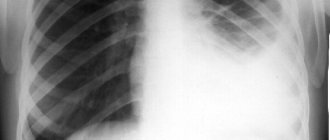The level of cholesterol in the blood is different for each person, depending on age, gender and other factors, but in general, this organic substance is present in the bodies of all living beings on the planet. Without it, membrane cells would not maintain their shape, and important metabolic processes would not occur. Thus, 75–85% of cholesterol is produced independently and only the remaining 20–25% enters the body with food.
Many have heard that under unfavorable living conditions, poor diet, bad habits and obesity, cholesterol in the blood rises. But how can one determine whether the levels of a substance in a particular person are normal and whether it is worth starting to take measures to reduce it? Today we will talk about what cholesterol is, why it is needed in the human body, and what it should be like normally.
What does cholesterol look like?
Many people think of cholesterol as fat and believe that the fattier the food, the more cholesterol it contains. This point of view is only partly justified. Cholesterol is found in the blood and looks like a viscous substance. Cholesterol cannot be considered exclusively harmful, because it is consumed by the body in the process of producing hormones and forming cell membranes. To varying degrees, cholesterol is involved in the functioning of the immune, nervous and digestive systems, so a certain amount of cholesterol must be contained in the body at all times. Another thing is that keeping it within acceptable limits is not always easy.
Excess cholesterol
tends to deposit on the inner walls of arteries.
At first, this is an imperceptible process, but gradually, due to the cholesterol layer, the diameter of the artery narrows, and blood begins to pass through it worse. In places where the vessel narrows, a dense formation is formed from the cholesterol layer, which is commonly called a “ cholesterol plaque
.”
Cholesterol plaques not only almost completely block the flow of blood through the vessel, but also reduce its elasticity. The process of cholesterol formation is called “ atherosclerosis
”.
By themselves, single cholesterol plaques do not pose a serious health hazard, but if you do not take action, over time there will be too many of them. In addition, cholesterol plaque
- This is the initial stage of
thrombus
. Often blood clots form where atherosclerotic plaques were located. The danger of a blood clot is that it completely seals the vessels and can block the flow of blood to vital organs. If a blood clot occurs in a vessel supplying the heart, a person may have a myocardial infarction, and if blood flow stops in a vessel supplying the brain, the person may suffer a stroke.
Does high cholesterol cause death?
Cholesterol itself is not considered deadly. Complications caused by high cholesterol levels can lead to death. We have already named some of them. Atherosclerosis can trigger the development of coronary heart disease, and one of the complications can be myocardial infarction, stroke, acute thrombosis and other diseases. The list can be large and is determined by which arteries were affected.
In what form is cholesterol found in the body?
Over the course of many decades of studying this substance, scientists have identified several types of cholesterol molecules, which each have their own functions in the body.
Due to this distribution, cholesterol can be beneficial (good) and can also be harmful (bad):
- Good cholesterol (HDL) is a high molecular density lipoprotein that is associated with protein molecules and, actively moving through the bloodstream, collects free cholesterol molecules and delivers them back to the liver, where they are utilized by bile. Most of HDL is used to produce bile acids;
- Bad cholesterol (LDL) is a low molecular density lipoprotein that transports cholesterol into the cells of organisms, but LDL also has the ability to settle on the inner sides of the arterial membranes, forming a cholesterol plaque;
- Very low molecular weight lipoproteins (VLDL) are lipid molecules that contain triglycerides;
- Triglycerides - found in VLDL, are energy sources for body cells;
- Chylomicrons are lipoprotein molecules that transport cholesterol molecules from the intestines to liver cells.
Standard indicators for the ratio of high molecular weight lipoproteins (HDL) to the total amount of low molecular weight lipoproteins (LDL and VLDL) do not exceed a ratio of 1:3.
LDL and HDL
Is all cholesterol the same?
Cholesterol is found in the blood, but does not dissolve in it. Cholesterol is carried throughout the body by lipoproteins. High density lipoprotein (HDL) molecules
move cholesterol from the arteries to the liver. Later, this cholesterol is excreted from the body and is not deposited on the walls of blood vessels. Such cholesterol is considered “good” because it not only does not increase, but reduces the risk of developing cardiovascular diseases.
Another type of cholesterol carried by low-density lipoprotein (LDL) molecules
from the liver throughout the body. In peripheral tissues, cholesterol gradually settles on the walls of blood vessels, resulting in the formation of atherosclerotic plaques. It is important for a person to monitor and prevent an increase in the level of low-density lipoproteins, or “bad” cholesterol.
Another form of lipids that provide the body with energy, but in large quantities can be harmful, are triglycerides. They are synthesized by the liver or enter the body with food, and then pass into the blood. A high content of triglycerides in the blood is also undesirable, since it can disrupt the functioning of the circulatory system.
Factors contributing to the development of “fatty plaques”
One of the main modifiable factors affecting the condition of blood vessels and not related to diet is smoking. Smoking causes more damage to the cardiovascular system rather than the lungs. In addition, it is important:
- watch your weight;
- do not consume large amounts of salt, fatty animal foods;
- monitor triglyceride levels and the concentration of bad cholesterol in the blood.
A significant part of liver and kidney diseases nowadays can be treated, so it is necessary to regularly examine them and begin treatment as early as possible.
As for the causes of atherosclerosis related to genetics, age and early menopause, we can only hope for the best. Statistically, men are more at risk of atherosclerosis, although a number of researchers are inclined to think that this is due to a traditionally “male”, unhealthy lifestyle.
The factors “add up”, that is, the more factors, the greater the risk of “plaques”. By getting rid of even one “non-essential” risk factor, a person reduces the likelihood of disease.
What increases cholesterol?
Increased cholesterol levels can be due to various factors. The first thing you should pay attention to is your diet
.
If a person has a slight increase in cholesterol levels, doctors usually recommend that they eat less foods high in saturated fat, but certain health problems can also contribute to high cholesterol levels. For example, chronic renal failure or decreased thyroid function. Some people may have high cholesterol levels “naturally” and be inherited. This genetic abnormality is called “ familial hypercholesterolemia
”.
When shaping your diet, you need to remember that cholesterol is found only in products of animal origin. This argument is often made in favor of a plant-based diet by vegetarians. However, this does not mean that if animal food is excluded, the rest of the diet can be uncontrolled. Food fried in vegetable oil and products containing palm oil can also have a negative effect on lipid metabolism.
Do healthy people need to monitor their cholesterol?
Often people begin to monitor certain indicators when problems appear and their health worsens, but prevention is always better than cure. The concept of “healthy person” is too general. You may not have liver or metabolic problems now, but that doesn't mean you won't have them in the future. People with identified lipid metabolism disorders should regularly undergo cholesterol tests, but others should not check the strength of their body.
If your diet often contains fatty foods, high-calorie foods, and in general you like to indulge in sweets, then sooner or later this will increase your cholesterol. Other cardiovascular risk factors may also have an impact. As a result, you risk getting atherosclerosis with all the attendant consequences.
Cholesterol norm
If, according to the test results, your cholesterol is normal, then there is no serious cause for concern. Provided you follow the rules of a healthy diet and a healthy lifestyle, the next examination can be done in a few years.
If the cholesterol level is elevated ( from 5 to 6.4 mmol/l or more
), then it’s worth monitoring it every six months to observe the dynamics. At the same time, you need to reconsider your diet, remove foods that increase cholesterol, and also give up bad habits: smoking and drinking alcohol. Your doctor should warn you about additional risks associated with the presence of concomitant diseases.
over 6.4 mmol/l is considered a high-risk level.
. This indicator indicates the need for specialized treatment, since there is a high probability of developing coronary heart disease and other cardiovascular complications. The treatment program should be drawn up by a doctor based on the tests performed, including identifying the level of LDL, HDL and triglycerides.
How to adjust the cholesterol index?
Correcting the cholesterol index should begin with changing your usual lifestyle.
The first step is to give up bad habits that lead to the destruction of the vascular membranes; nicotine provokes constant vascular spasms, which disrupts the movement of blood flow, and alcohol and the alcohol it contains lead to microtraumas on the inside of the membrane (in the intima).
Low-molecular lipids are deposited in these microcracks, forming a cholesterol plaque.
When reducing the cholesterol index, special attention should be paid to physical activity (daily) and active sports training. Physical activity improves all metabolic processes and reduces LDL cholesterol.
Also, activity restores metabolism in the body and prevents the development of stroke and heart attack, due to the strengthening of the vascular membranes.
Risk group for atherosclerosis
Atherosclerosis
- an insidious disease that develops gradually. Cholesterol level is an indirect indicator of the risk of developing atherosclerosis, but some categories of people need to be tested for cholesterol at certain intervals. The following recommendations are given:
- men over 40 years old;
- women over 45 years old;
- people with diagnosed diabetes;
- overweight people;
- people with diseases of the thyroid gland, kidneys and high blood pressure;
- smokers;
- people who lead a sedentary lifestyle.
It is important to understand that at the first stage of development, atherosclerosis has no visible specific manifestations. A person may not even be aware of the developing disease and the problem with cholesterol. Therefore, doctors recommend regularly donating blood for biochemical analysis.
When should you start monitoring your cholesterol?
It's never too early for prevention. It’s better to get used to monitoring your health from a young age, then it will present you with fewer unpleasant surprises. It is especially important to pay attention to your health after 40 years of age
, this is true for both men and women. In men, coronary heart disease may begin to develop earlier than in women. This is explained by hormonal levels. Women of childbearing age have more “good” cholesterol in their bodies, while in men the preponderance may lean toward “bad” cholesterol. After menopause, women's bad cholesterol levels may also begin to rise along with their triglyceride levels.
If previously it was believed that atherosclerosis mainly affects mature and elderly people, now the disease is diagnosed in younger patients, so it would be reasonable to start controlling cholesterol levels at 30-35 years of age. If the analysis shows that everything is normal, a re-check can be carried out after 3-4 years, but if the cholesterol level is elevated or there is a genetic predisposition to the development of heart and vascular diseases, then it is worth checking the cholesterol level more often.
Do children suffer from high cholesterol?
Cholesterol levels in children, as a rule, do not rise above normal, but they can also be at risk if hereditary hypercholesterolemia is found in their family. In this case, the child will be registered with a pediatric cardiologist from an early age. A cholesterol test should be done at the age of two years, and then repeated periodically.
Read more about acceptable levels of the compound in the blood
When talking about average cholesterol standards, it is impossible to classify all people into one category. The fact is that indicators change throughout life and depend on age, gender, lifestyle, concomitant diseases, taking certain medications and other factors.
For example, doctors have found that women under 50 suffer less frequently from manifestations of vascular atherosclerosis, and, accordingly, increased amounts of bad cholesterol. This is due to the maintenance of capillaries in good condition by the production of estrogen, the female sex hormone. After 50 years, when menopause begins, blood cholesterol levels in men and women approximately equalize.
The following is a table that shows the normal levels of total cholesterol, high and low density lipoproteins in the blood. As already mentioned, there are differences between men and women at different ages between blood cholesterol levels. Men have faster metabolic processes and require more energy throughout their lives, so they eat more fatty and high-calorie foods.
It so happened that normal physical indicators (such as pulse, blood pressure) in the male population are always slightly higher. It's the same with cholesterol. The norms for men and women by age, starting with childhood, are reflected in the following tables.
Symptoms of high cholesterol
It is possible to determine the exact level of cholesterol in the body only after an analysis, but there are symptoms that may indicate the presence of disturbances in the functioning of the body. This will not allow you to make a diagnosis, but it should be a reason to visit a lipidologist or cardiologist. Make an appointment for a preventive appointment if:
- physical activity or excessive anxiety provokes the appearance of aching pain in the chest;
- even minor physical activity causes a feeling of lack of oxygen;
- you begin to get tired faster, and fatigue is accompanied by a feeling of heaviness in the chest area;
- you often have a headache for no reason, there is noise in your ears, you feel oxygen starvation to the point of fainting.
If you notice the symptoms described, make an appointment with your doctor. It will be enough to visit a therapist so that he can conduct a preventive examination and, if necessary, refer you to other specialized specialists.
The diagnosis of atherosclerosis is difficult to make without biochemical and instrumental examination, so be prepared for the fact that you will have to undergo a series of tests. The examination usually begins with a blood test and an ECG.
. Then, depending on the results obtained, a treatment program is prescribed, if necessary. The patient’s blood is usually taken from a vein, but if a quick result is needed, it can be obtained using the express method by drawing blood from a finger. To obtain more accurate results, it is recommended to donate blood on an empty stomach.
Cardiac disease risk calculator
The calculators are based on observations that have been going on for decades. All of them take into account the most obvious factors: age, body mass index, gender, bad habits, hereditary and acquired diseases. The result is approximate, but allows us to make a general risk assessment. The risk is determined as a percentage:
- more than 20% - high risk of disease;
- 10%-20% - average danger;
- less than 10% – low.
blood cholesterol level A
10% probability is a sufficient reason to adjust your lifestyle.










